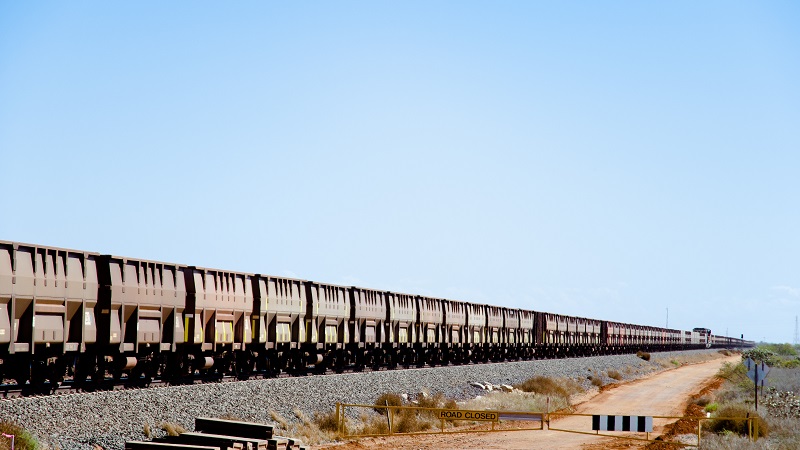The economic and emissions impacts of trade disruptions between Australia and the PRC
December 18 2020

By Xunpeng Shi, James Cheong and Michael Zhou
Key takeaways
- Using a computable general equilibrium (CGE) model, this briefing provides an estimate of the changes in gross domestic product (GDP) and carbon dioxide (CO2) emissions arising from cutting off trade flows in each of 63 trade sectors between Australia and the People's Republic of China (PRC) in 2014.
- In 45 of 63 sectors, cutting off trade in either direction would have caused absolute GDP losses in both Australia and the PRC, as well as globally. CO2 emissions in both countries and globally would also have increased.
- When trade was cut off, the importing country would have lost significantly more GDP, in absolute terms, than the exporting country. If Australia had blocked PRC imports, greater GDP losses would have been incurred by Australia than the PRC in 60 of the 63 sectors. And in terms of the PRC blocking Australian imports, greater GDP losses would have been incurred by the PRC in 61 of the 63 sectors. This effect was especially pronounced in Australian exports of ores and in PRC exports of electronic and optical goods.
- Stopping exports from the PRC to Australia would have had relatively little impact on the emissions of either country, while stopping exports from Australia to the PRC would tend to have had larger emissions impacts.
NB: Analytical results illustrate impacts across sectors based on 2014 economic structures and at 2014 prices. For this reason, values listed in analysis below should only be used to infer relative gains or losses per sector for either country. Caution is required when translating inferences from the simulation results to ongoing bilateral trade disputes.
Introduction
Using a computable general equilibrium (CGE) model which allows for investment, production and consumption to adjust to changes in trade patterns, and which assumes that monetary policy remains unaltered, this briefing provides an estimate of the changes in gross domestic product (GDP) and carbon dioxide (CO2) emissions by individually simulating trade cessation in each of 63 trade sectors between Australia and the People's Republic of China (PRC), and in both directions. Based on the Global Trade Analysis Project (GTAP) 10 database, analytical results derived from the simulation illustrate impacts across sectors based on 2014 economic structures and at 2014 prices.
It is important to note that for this reason, values listed in analysis below should only be used to infer relative gains or losses per sector for either country. In particular, the size of current natural gas exports are not reflected in results because a large proportion of Australia’s natural gas exports from the east coast did not exist in 2014. As such, caution is required when translating inferences from the simulation results to ongoing bilateral trade disputes.
Key findings
In 45 of 63 sectors, cutting off trade in either direction would have caused the absolute value of GDP to contract in both Australia and the PRC, as well as globally. It would also have caused absolute values of CO2 emissions to increase in both countries and globally.
If trade had been cut off in 2014, the importing country would have tended to lose significantly more GDP in absolute terms than the exporting country. In some cases, this occurred even where the percentage loss for the importing country was smaller than that for the exporting country. If Australia had cut off PRC imports, greater absolute GDP losses would have been incurred by Australia than the PRC in 60 of the 63 sectors. And if the PRC had cut off Australian imports, greater absolute GDP losses would have been incurred by the PRC in 61 of the 63 sectors.
First, this is because restriction of imports from one country necessitates fulfilling demand by increasing imports from elsewhere, which imposes additional costs on the importing country. If the good or service being imported is not easily replaced by suppliers in other countries, the costs incurred can be significantly higher. Second, if the restricted sector includes imports that are inputs in supply-chains, there will be further impacts down those supply-chains, exacerbating the costs incurred.[1] For example, the PRC's imposition of 80.5 percent tariffs on Australian barley in May 2020 will result in shifts to other sources of barley that decrease the efficiency of brewing processes for PRC alcoholic beverage producers.[2]
Table 1 shows that blocking imports of Australian coal, non-ferrous metals and ores (which includes iron ore) would have caused particularly large GDP losses for the PRC. According to the GTAP 10 database, the PRC's GDP was 7.11 times larger than Australia's in 2014, meaning a one percent change in GDP in both countries in 2014 would have implied a 7.11 times larger absolute change in the PRC compared to Australia. Had imports of Australian coal been cut off in 2014, Australia's GDP would have contracted by 0.050 percent, while the PRC's would have contracted by a slightly higher 0.053 percent. The disparity in the size of the two countries' GDP, however, implies the PRC would have been significantly more severely affected in absolute terms. For non-ferrous metals, Australia’s GDP loss would have been 0.029 percent while the PRC’s would have been 0.011 percent, again implying a larger absolute GDP loss for the PRC owing to its larger aggregate GDP.
In the case of ores, Australia's GDP would have decreased by 0.424 percent. The GDP loss for the PRC, however, would have been 3.44 times larger at 1.46 percent (Table 1). The relatively small impact of a cut-off of iron ore trade on Australia compared with that on the PRC is due to the difference in substitution capability. The top four exporters of iron ore (including Australia and Brazil) accounted for 78 percent of world total exports while the top four steel producing countries (the PRC, Japan, the US and India) accounted for 67 percent of total world steel production in 2014.[3] Another possible reason is that steel companies can expand their production at lower relative marginal costs than iron ore producers.
Stopping Australian exports of agricultural goods would also have tended to harm the PRC more than Australia. For example, stopping Australian exports of grains other than rice and wheat (such as barley and maize) would have induced a 0.004 percent GDP loss for Australia. However, the GDP loss for the PRC would have been 0.013 percent. This result is supported by modelling by the Australian Bureau of Agricultural and Resource Economics and Sciences, which found that the imposition of a 80.5 percent tariff on Australian barley imports in 2020 would cause the PRC to lose close to three times as much as Australia.[4]
Turning to the flow of goods and services in the opposite direction, Table 2 indicates stopping imports from the PRC would have caused especially large GDP losses for Australia in sectors such as electronic and optical products, and apparel. Stopping imports of electronic and optical products from the PRC would have caused a 0.242 percent GDP loss, whereas the PRC’s 0.008 percent loss would have been 30.3 times smaller. In this direction of trade, the larger size of the PRC's GDP means that the disparity in absolute GDP losses would be smaller. Ceasing imports of apparel from the PRC would have incurred a 0.153 percent GDP loss for Australia, compared to a 0.001 percent GDP loss for the PRC.
Table 2 shows that stopping exports from the PRC to Australia would have had relatively little impact on the emissions of either country. The maximum emissions change of a 0.266 percent reduction in Australia would have occured when exports of petroleum and coke products to Australia were stopped, with emissions changes less than 0.01 percent for most sectors.
However, stopping exports from Australia to the PRC would tend to have had larger emissions impacts, as indicated in Table 1. Cessation of coal and ores exports from Australia to the PRC would have had differing emissions impacts on the PRC, while Australia’s emissions would have increased in both cases. Blocking ores exports would have lead to a 3.44 percent emissions increase in Australia, but a 1.55 percent decrease in the PRC. In contrast, blocking coal exports would have resulted in a 1.06 percent emissions increase in Australia, and a 0.677 percent increase in the PRC.
Associate Professor Xunpeng Shi is Principal Research Fellow at the Australia-China Relations Institute, University of Technology Sydney.
Associate Professor James Cheong is Programme Director of the BBA-Economics Programme in the Department of Economics and Finance at The Hang Seng University of Hong Kong.
Michael Zhou is Project and Research Officer at the Australia-China Relations Institute, University of Technology Sydney.
Sources
[1] Liangyue Cao and Jared Greenville, ' Understanding how China's tariff on Australian barley exports will affect the agricultural sector', Australian Bureau of Agricultural and Resource Economics and Sciences, June 2020 <https://www.agriculture.gov.au/abares/research-topics/trade/understanding-chinas-tariff-on-australian-barley>.
[2] Geoff Chambers and Richard Ferguson, 'Coronavirus: Chinese brewer buyers push back on tariffs', The Australian, May 13 2020 <https://www.theaustralian.com.au/nation/politics/coronavirus-chinese-brewer-buyers-push-back-on-tariffs/news-story/cf777d648b2a9342ff10a45b40e8ff4a>.
[3] World Steel Association, ‘World steel in figures 2015’, May 2015, <https://www.worldsteel.org/en/dam/jcr:7f5a36e2-e71e-4c58-b93f-f78d0c5933e4/WSIF_2015_vfinal.pdf>.
[4] Liangyue Cao and Jared Greenville, ' Understanding how China's tariff on Australian barley exports will affect the agricultural sector', Australian Bureau of Agricultural and Resource Economics and Sciences, June 2020 <https://www.agriculture.gov.au/abares/research-topics/trade/understanding-chinas-tariff-on-australian-barley>.
Authors
|
Professor Xunpeng Shi Research Principal 
|
|---|
|
Michael Zhou Project and Research Officer 
|
|---|
|
Associate Professor James Cheong

|
|---|
